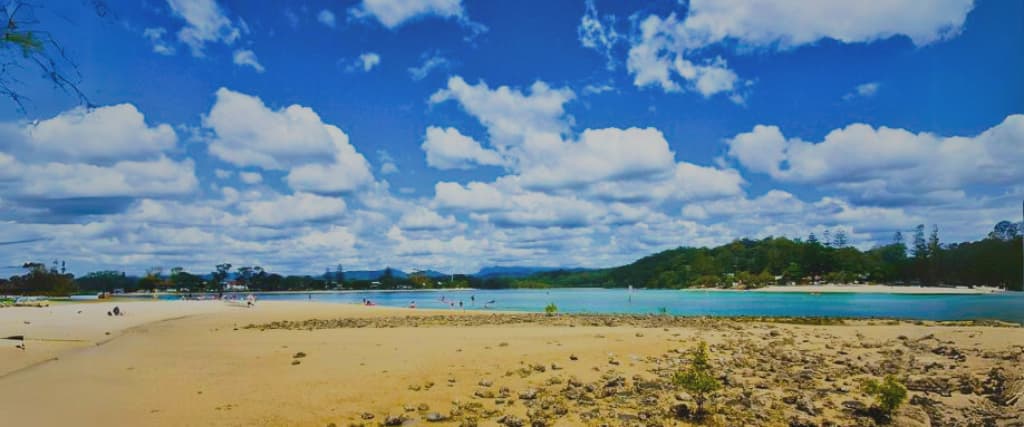
Do you want to go to a land down under? The mystery and allure of Australia has assured millions of visitors explore this great Southern land every year – the continent with a rich and varied cultural history and natural wonders beyond comparison. If you’re contemplating an Aussie holiday, we’ll tell you everything you need to know before you embark upon a journey to Terra Australis.
Deciding on your destination
Australia is big. Really big. That’s about 4.7 million square miles (7.7 million square kilometres) big. To put it in context, Texas can fit inside Australia bout 11 times.
That means you can experience tropical rainforests such as the Daintree in Northern Queensland, the rust-coloured outback in the Northern Territory, or the pristine beaches of Bondi in Sydney. Melbourne is full of cultural wonders, and the Barossa Valley in South Australia is a mecca for wine and food enthusiasts. The remote Western Australia has its fair share of festivals, cultural events, and resorts as well – including having the highest amount of sunlight per year. There’s snowcapped mountains in the Great Dividing Range during winter and no shortage of resorts in Noosa and the Gold Coast during summer.
Getting an itinerary planned is no small feat – you need to set a budget and figure out what kind of holiday you want as well as for how long.
For the luxe type
Luxury abounds in Australia, with well-appointed resorts dotting the Sunshine and Gold Coasts, the “hippie haven” Byron Bay, and the remote yet wonderous towns of Broome, and the tropical paradises of Noosa, Townsville, and Cairns. Coffs Harbour and Port Macquarie are also highly sought-after pampering destinations. Adelaide and the Barossa Valley is known for intimate food and wine adventures; the apple isle of Tasmania equally renowned for rustic, off-beat cultural experiences. Of course, five-star hotels come with five-star price tags. You can save a bit if you go off season, of course. But – you can experience all the richness of Australia’s food, shopping, and dining culture.
For the adventurer
Australia as a nation built on muscle and dust is true – and there’s so many things to do as an adventurous type in Australia. You can drive across the Outback from mining town Broken Hill to opal haven Coober Pedy; trek the many trails of the Grampians or Kosciusko national parks; stop along the many cultural sites in between capital cities, and so much more. Of course, you’ll need to stock up on food, fuel, and first aid kits, as well as get a thorough understanding of the country you’ll be venturing into. If you’re planning a trip up to Northern Territory, you may need to get permission to travel on Aboriginal land. Be sure to read up on your destination – and if it seems too dangerous, leave it out. That said, you can experience a lot of natural beauty this way. Best of all, it’s free!
Driving – a must in the Bush
If you are sticking to tourist traps and metropolitan areas such as Sydney or Melbourne or Brisbane, there is ample public transport, ride sharing, and taxis to help get you to your destination – in fact, Melbourne is laid out in a compact grid pattern, meaning walking around is a breeze!
However, if you’re exploring Victoria’s high country or the goldfields, you will likely need your own transport. Though there are trains and planes to remote areas, once you’re on the ground, rural and regional towns aren’t as connected by public transport as cities. If you are planning a road trip, you should obtain your international driver’s permit and hire a vehicle that suits the environment you’re travelling through. A hatchback will not cut it if you’re going across the Nullarbor – you’ll need an SUV or 4WD. You also need to keep in mind that Australia is one of the few countries that drives on the right; and you may need to practice during off hours to get the hang of it.
Group or solo travel
Travelling in a group as a senior is a great way to make friends and socialise – perhaps with people you may never have met in day-to-day life. Smaller groups often allow for more personalised experiences and greater opportunities for meaningful connections with fellow travellers that will last long after you return home. However, solo travel means freedom to do what you want when you want. If you prefer tourist traps, you can visit them for as long as you want. If you like local cultural experiences, you can avoid the tourist areas. It also develops self-reliance and self-direction. However, solo travellers may be taking on more risk because they are quite literally – fending for themselves.
Australia is safe: but watch out for wildlife
Australia is one of the safest countries in the world when it comes to crime. Though protecting your personal belongings is a must, you need to watch out for poisonous or venomous wildlife in the regions or rural areas. Visit tourist information centres when you hit town and ask about any dangerous wildlife in the area. Be sure to have all your documents and other information handy, as well as register your travel with your embassy or local consulate.
Do you have travel insurance?
Australia is a long way from anywhere. Though a developed country, there are lots of miles in between towns where things can – and may – go wrong. Even if you think you have travel insurance included with your credit or charge card, you should make a travel insurance enquiry to ensure you’re covered for emergency repatriation, flight delays, missing or damaged baggage, or sudden medical care. It’s always better to be safe than sorry – so get covered and have that peace of mind!
